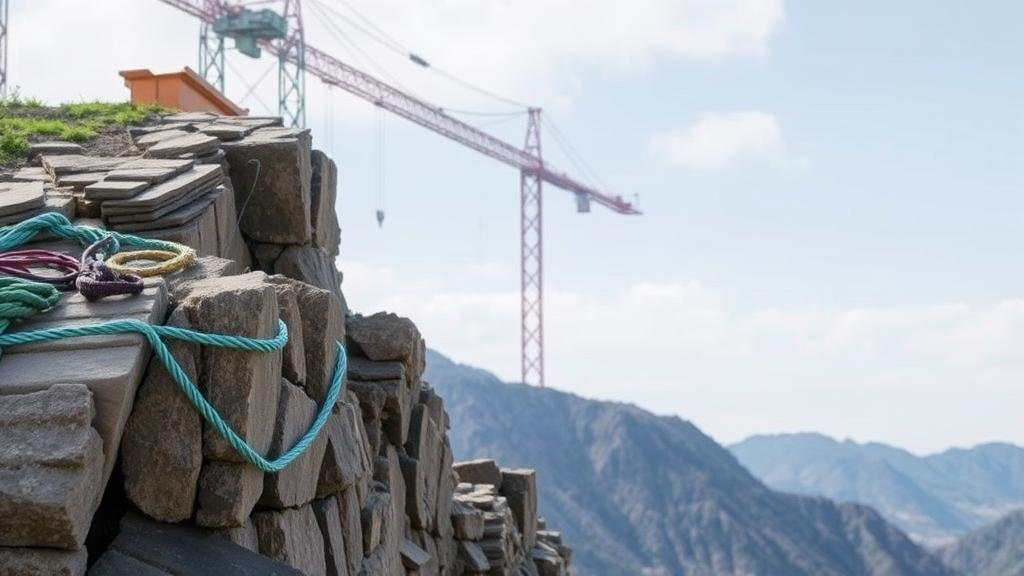How to Approach Trap-Heavy Sites With Minimal Risk of Collapse
How to Approach Trap-Heavy Sites With Minimal Risk of Collapse
Trap-heavy sites, often characterized by unstable soil conditions, irregular topography, and variability in debris and materials present, pose significant risks when approached without proper preparation and understanding. Addressing these challenges requires thorough analysis, strategic planning, and adherence to engineering principles. This article discusses the methodologies and best practices to minimize risks associated with traversing these complex environments.
Understanding Trap-Heaviness
Trap-heavy sites are primarily identified by their potential for collapse, often due to the combination of geological instabilities and human factors such as previous excavation or construction activities. term trap refers to the precarious nature of the ground, which may appear stable but can yield unexpected failures.
For example, a construction site built on fill soil may be deemed trap-heavy if the fill is not compacted adequately or contains organic materials, leading to significant settlement over time. Such conditions reinforce the importance of pre-assessment in planning site approaches.
- Example: The 1981 Hyatt Regency walkway collapse in Kansas City highlights how inadequate support systems can lead to catastrophic failures in structures built within trap-heavy environments.
- Case Study: A major urban redevelopment project often faces issues of soil liquefaction, particularly when built on reclaimed lands prone to seismic activity.
Risk Assessment and Geotechnical Investigation
The cornerstone of minimizing risks in trap-heavy environments is conducting a thorough geotechnical investigation. This process includes soil sampling, laboratory testing, and subsurface exploration to gather critical data about soil composition, moisture content, load-bearing capacity, and potential for erosion or landslides.
For example, the American Society for Testing and Materials (ASTM) recommends performing Standard Penetration Tests (SPT) to determine the soils resistance to penetration, which helps in evaluating the soils stability under various loads.
- Statistical data shows that inadequate site investigations contribute to approximately 61% of construction-related failures.
- Utilizing technology such as Ground Penetrating Radar (GPR) can enhance the understanding of subsurface conditions, leading to more effective risk mitigation strategies.
Useing Strategic Planning
Once the risk assessment is completed, strategic planning must take place to address potential hazards. This involves establishing excavation methods, determining appropriate materials for backfilling, and designing support structures such as underpinning or temporary shoring.
For example, in a trap-heavy site with a high water table, implementing dewatering techniques can stabilize the surrounding soil, reducing the likelihood of collapse during construction activities. Alternatives such as soil nailing or installing soil anchors can also provide additional support.
- Real-world Application: In the case of the Big Dig project in Boston, extensive dewatering and ground stabilization efforts were crucial to managing the risks associated with trap-heavy conditions.
- Best Practice: Engaging experienced geotechnical engineers during the planning stage can ensure that all potential risks are considered and effectively managed.
Monitoring and Ongoing Assessment
Even after implementing initial risk mitigation strategies, continuous monitoring is essential. Technologies such as inclinometers and piezometers can provide real-time data on ground movement and water pressure, allowing for proactive measures to be taken before a collapse occurs.
The importance of developing a robust monitoring plan cannot be overstated. A construction site that is subjected to ongoing assessments helps ensure that any unforeseen changes in soil conditions are addressed promptly. This was evident during the construction of the Sydney Harbour Tunnel, where extensive monitoring led to immediate interventions that prevented a potential collapse due to soil instability.
- Data Point: Research indicates that projects with comprehensive monitoring programs have a 40% lower incidence of safety-related incidents.
- Recommendation: Establish clear communication channels among site management and engineering teams to address any alerts or changes in geotechnical data effectively.
Actionable Takeaways
Approaching trap-heavy sites with minimal risk of collapse involves several key strategies that can be distilled into actionable takeaways:
- Conduct thorough geotechnical investigations to assess soil conditions and potential risks.
- Use strategic planning that includes excavation methods, support structures, and effective dewatering techniques.
- Engage experienced professionals for continual monitoring to respond swiftly to potential hazards.
- Prioritize communication among teams to maintain a cohesive approach to safety and risk management.
By following these guidelines, practitioners can significantly reduce the risks associated with trap-heavy sites, ensuring safer and more effective construction practices.


